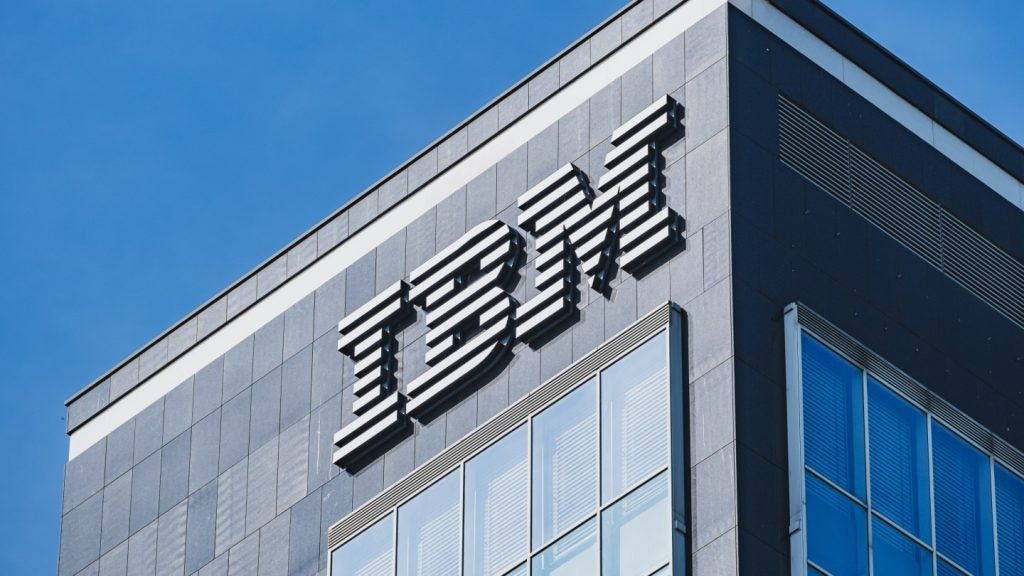
Blockchain technology often referred to as “distributed ledger technology” or DLT is a means by which the participants in a distributed network can each maintain a copy of an immutable ledger of transactions, and where transactions can be executed without the need for a single, central, coordinating authority. But what is blockchain in business and how will it develop in the future?
Why does blockchain matter for business?
The ability to effectively execute transactions without the presence of a central authority is regarded by many as the chief benefit of blockchain technology; as it creates the promise that organisations will be able to transact business with one another without being subject to third-party control. However, this freedom from central control comes at a very significant cost, which renders many of the claims of cost reduction, and improved efficiency, open to debate at best, and simply false at worst.
While blockchain technology will have lost its gloss by 2025, it will have found its way into the heart of many key business processes; especially those involving multiple, disparate, participants.
Those organisations that insist on forging ahead to create their own blockchain solutions are likely to be disappointed; blockchain isn’t a single-player game. The value of a blockchain lies in its participants and the extent to which they commit to the platform.
Blockchain is a nascent industry. It is moving beyond the incubation phase but is still largely the domain of proof-of-concept projects and small-scale production deployments.
Many organisations, most notably in the financial services sector, have been working on internal blockchain projects for some time now. Many of these internal projects will fail because there is little value to be had from a blockchain that only has one participant. Blockchain solutions require a network of parties to agree to use the network, agree on the underlying business processes that will govern the network, and then to integrate their systems with the network. Blockchain is not a game you can play on your own – it is a team sport.
How well do you really know your competitors?
Access the most comprehensive Company Profiles on the market, powered by GlobalData. Save hours of research. Gain competitive edge.

Thank you!
Your download email will arrive shortly
Not ready to buy yet? Download a free sample
We are confident about the unique quality of our Company Profiles. However, we want you to make the most beneficial decision for your business, so we offer a free sample that you can download by submitting the below form
By GlobalDataOn the supply side, the industry is being shaped by a host of different actors ranging from start-ups, platform providers, and consulting firms, all of whom see much to gain by supporting the blockchain phenomenon, even if their ultimate goal lies in the provision of more mundane management consulting services than in the actual implementation of blockchain solutions.
The third class of player also exists in the form of consortia or industry alliances; this is where the greatest impact will be seen. There is little point in creating a fantastic new supply chain solution if only one organisation is prepared to participate in it so, in order to deliver the promise of transformation, blockchain projects will need to address the requirements of multiple stakeholders to ensure that everyone is motivated to participate in the ultimate solution.
Consortia may be the result of a group of organisations coming together to collaborate on a project, or they may be led by a single player which sets out to recruit partners to the project. In January 2017 seven European banks formed the Digital Trade Chain consortium with the objective of developing a platform to simplify and facilitate domestic and cross-border trade for European SMEs (the DTC consortium subsequently announced a partnership with IBM in June 2017 for the delivery of the underlying blockchain technology using the Hyperledger blockchain fabric). Technology vendors like IBM, SAP, and Microsoft are seeking to use their convening power to attract a range of partners to their blockchain programs; IBM’s support of the HyperLedger has been combined with an aggressive marketing and partner acquisition initiative aimed at creating a critical mass of support for its technology. SAP launched its own Blockchain Innovation Program in September 2017 (with nine initial members, subsequently boosted by a further 27 in November 2017) and is also actively participating in other consortia as a technology partner (SAP recently announced that it has joined the Spanish Alastria Consortium, and the Blockchain in Trucking Alliance).
What are the main themes around blockchain?
Moving beyond proof-of-concept
2016 was the year of the blockchain proof-of-concept. 2017 saw some early stage or small production blockchain deployments but nothing at scale. Some early projects will go live in 2018, however, larger scale commercial releases of blockchain technology are likely to be delayed until after 2020, given the complexities associated with adoption, issues of scale, and regulatory hurdles.
Platform wars
The deployment of blockchain technology depends on the development of the DLT infrastructure on which applications can be built. So far, the leading developers of open infrastructure platforms for DLT apps are Ethereum and Hyperledger. Ethereum is currently the market leader in blockchain infrastructure platforms, with Microsoft, Intel, JP Morgan, Accenture and UBS as high-profile users. While Ethereum enjoys the benefit of being the first-mover in this space, commercial consortia in fintech and other sectors are likely to prefer private blockchains for security, resilience, and performance reasons. Alternative platforms like Hyperledger count IBM and Hitachi as customers. Ripple, R3, ConcenSys, Chain.com and Lisk are also making their marks in blockchain infrastructure platforms.
The race to scalability
Public blockchain technologies like bitcoin and Ethereum face significant challenges where it comes to scalability and performance. While Visa’s payment platform is designed to cope with tens of thousands of transactions per second, Ethererum can support roughly 15. Visa’s platform is close to 30,000 times more scalable than Ethereum. This is partly a function of physics – it will never be possible to coordinate transactions across hundreds of nodes (even if you only need 51% of them to respond) more quickly than when running transactions against a single central platform. It is also a function of the consensus mechanism that is used to validate transactions; both bitcoin and Ethereum rely on a costly and resource intensive “proof-of-work” algorithm – neither bitcoin nor Ethereum will ever be capable of scaling in a meaningful way until they move away from “proof-of-work” to the much more resource efficient “proof-of-stake” approach to consensus. Platforms like EOS are already ahead of the game in this regard – having been built with both performance and scalability in mind.
Trust
The original purpose of blockchain technology was to enable the transfer of value within trustless networks; where the different parties did not have to trust each other to conduct transactions involving the exchange of value. Beyond the world of cryptocurrencies, however, trust remains important to most commercial relationships. Most commercial blockchains will reject the wholly trustless model promoted by the cryptocurrency platforms in place of permission platforms where participants are vetted and approved before they can join the network.
There is a strong ideological element to the DLT value proposition, centred on “trust”. The primary goal of the bitcoin protocol was the creation of a network in which no single member of the network had to trust any other participant. The mechanism for approving and ordering transactions was designed so that it didn’t require a single trusted authority to control the network. Indeed, bitcoin doesn’t require either party to know anything more about each other than the bitcoin addresses in which they have exchanges. This freedom from the need to trust the other party is the reason that many proponents of DLT claim that the additional cost of DLT is a price worth paying.
This quality of “trustlessness” offers up the promise that anyone can do business with anyone without either party having to know anything about the other. A manufacturer, for example, might make use of DLT to procure the raw materials they need and would only need to know the bitcoin address of the supplier.
What is the history of blockchain?
Most blockchain projects are still in development mode. Many are still in the proof-of-concept stage. There is no major blockchain ledger operating on a commercial basis yet (although Microsoft and IBM have blockchain-as-a-service offerings).
Some of the world’s most powerful companies – including Goldman Sachs, IBM and Microsoft – are investing heavily in distributed ledger technology (DLT) to gain an early edge in the technology as it moves beyond incubation phase and bitcoin exclusivity. But, while it is widely touted as the “next big thing”, DLT is still in its infancy. Amongst the investment community, it is widely misunderstood and typically conflated with bitcoin. Over the course of 2016 and 2017, DLT was the subject of enormous volumes of hype, with a raft of rash promises being made on its behalf by DLT proponents.
DLT will play an important role in enabling new business networks, and it will find its way into the core of many mainstream processes, but DLT is not magic. DLT will not bring about the dramatic transformation that proponents claim. While it will certainly play a role in supporting transformation, much of the hard work that will be required in order to digitise old and inefficient processes will have little or nothing to do with blockchain technology itself.
DLT is the technology that first appeared in the platform that underpinned the cryptocurrency, bitcoin. Now, it also underpins a great deal more: other cryptocurrencies and, more importantly, a wide range of digital “tokens” or “bearer instruments” appearing in pilot projects to verify identity, intellectual property, financial instruments, title deeds, licenses and health records.
Today, the first proofs-of-concept for DLT use cases are beginning to appear. Early adopters include precious metal storage and trading, share trading, property registration, P2P cryptocurrency transfers and transactions for the Internet of Things (IoT).
Enabled chiefly by the Ethereum and Hyperledger platforms, distributed commercial applications running on blockchain technology could start to appear in growing numbers within the next two years, and approach critical mass within five to seven years.
DLT’s beginnings were relatively modest and little known, and for the first 8 years, blockchain technology was more or less the exclusive domain of bitcoin. Interest in cryptocurrencies grew gradually over time, with the launch of the Mt Gox exchange in 2010, and the price of bitcoin rose steadily to $1000 by 2013. In 2015 the pace of DLT’s evolution saw a step change. The launch of Ethereum signalled a change in perspective. Ethereum, as well as representing a cryptocurrency in its own right, added the ability to embed smart contracts within its blockchain. Smart contracts are effectively small bundles of business logic that can be stored within, and executed upon, the Ethererum blockchain. Ethereum’s launch was followed by Hyperledger, backed by The Linux Foundation. Later, a couple of the tech titans got involved. Microsoft backed Ethereum and IBM backed Hyperledger. Both launched blockchain-as-a-Service (BaaS) offerings.
2016 saw the topic of blockchain and DLT explode into the public consciousness, with a sharp uptick in investment in the technology. By 2016, several banks – including Goldman Sachs and Santander – had begun to explore blockchain-based proofs-of-concept for various internal functions. In 2017, Cisco, Foxconn, Gemalto and others formed the IoT Blockchain Consortium in order to develop global standards for using DLT for helping devices interact with each other – by creating digital tokens – over the IoT.
By the end of 2017, over one in 10 banks were actively exploring blockchain technology in some form of a pilot project, and a number of early proof of concept projects graduated into the pilot phase. The Australian Stock Exchange (ASX) announced its intention to launch the world’s first blockchain platform for post-trade services, built by Digital Asset Holdings, and Senegal has stated its intention to launch the world’s first national digital currency, the eCFA.
By 2020 the majority of banks will have shelved their internal blockchain efforts to engage with one or more blockchain consortia, and early pilots will be running. By 2025 some banks may start using an alternative DLTbased payments system to SWIFT although this is more likely to be used to replace legacy interbank settlement processes, rather than as a replacement for consumer payment systems.
The story of distributed ledger technology so far…
- 2008: Satoshi Nakamoto publishes original Bitcoin White Paper
- 2009: First units of the bitcoin cryptocurrency released
- 2010: Mt. Gox, a bitcoin exchange, launched in Tokyo
- 2013: The price of a Bitcoin exceeds $1,000
- 2014: Mt. Gox exchange suffers massive fraud and halts bitcoin withdrawals
- 2015: Ethereum, an open-source, public blockchain platform is launched
- 2015: Microsoft launches Ethereum-Blockchain-as-a-Service (EBaaS)
- 2015: Citi develops Citicoin 2015 Visa, Citi and Nasdaq invest $30m in blockchain start-up Chain.com
- 2015: Visa showcases smart contract developed with DocuSign at Money 2020
- 2015: The Linux Foundation announces the creation of Hyperledger, a rival to Ethereum 2016 Federal Reserve works on building payment system in partnership with IBM
- 2016: R3 CEV launches Private Distributed Ledger Pilot
- 2016: Santander becomes the first major bank to use Ripple for cross border payments
- 2016: Several banks explore blockchain Proof-of-concept
- 2017: Cisco, Foxconn, Gemalto and others form IoT Blockchain Consortium
- 2017: IBM Blockchain, the first enterprise-ready blockchain service, is launched based on Hyperledger Fabric
- 2017: 15% of banks expected to be using blockchain technology 2018 HSBC announces world’s first trade finance transaction executed using the blockchain
- 2018: ASX launches world’s first blockchain trading platform, built by Digital Asset Holdings
- 2018: Senegal launches world’s first national digital currency, the eCFA
- 2020: All major corporations deploy consultants to look at internal DLT projects to cut costs
- 2025: Some banks start using an alternative DLT-based payments system
- 2030: Global DLT standards and regulations are in place for mass rollout of blockchain
This article was produced in association with GlobalData Thematic research. More details here about how to access in-depth reports and detailed thematic scorecard rankings.







